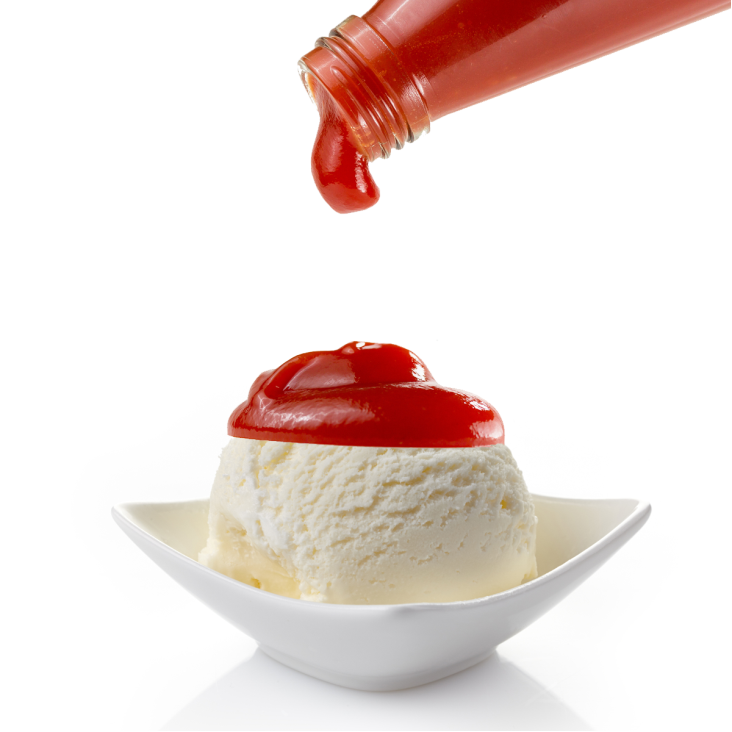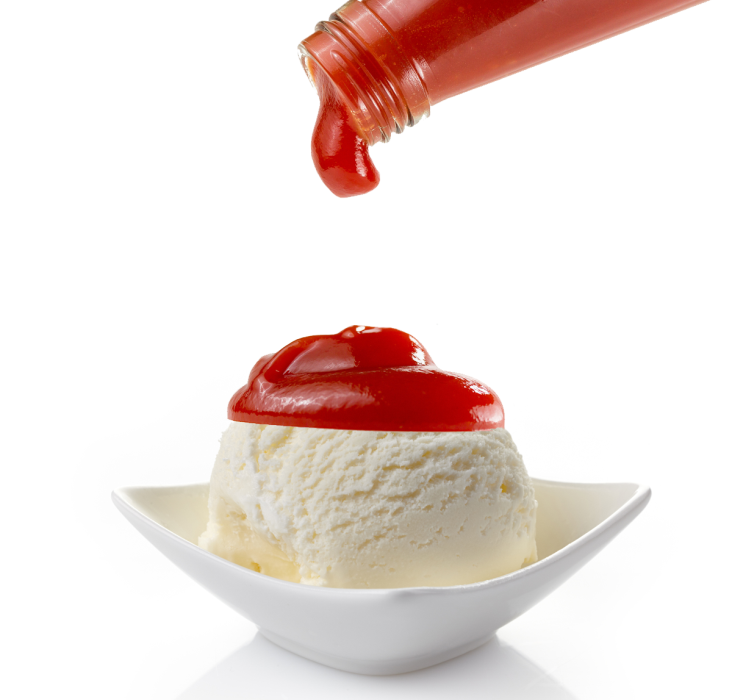
It’s summer! Yes, we know that at times right now it can be hard to know which day of the week it is let alone which month we’re in. But despite the lack of traditional markers – hello pool parties, cook-outs, family get-togethers, firework displays, and often fruitless searches for stores with a ready supply of ice – it is, nonetheless, actually summertime. OK, so Independence Day was a lock-down let-down, Zoom family get-togethers are frustrating at best, and ‘virtual pool parties’ are just not ‘a thing,’ at least not yet. But all is not lost. Looking on the bright side, the lack of organized firework displays was an unexpected relief for veterans with PTSD whose evenings are usually fraught with trauma-reviving explosions, and for those with noise-reactive pups who normally spend July 4th cowering under the bed. And the traditional summer BBQs, grills, cookouts, picnics – whatever flavor of al fresco dining you prefer – can still be fun even in the Age of COVID. Take it from us: all you need is a picnic blanket spread in the yard (or living room), a summer playlist queued up (or ask Alexa), a bucket of frosty drinks and a heaping bowl of potato salad, and you are good to go.
And in terms of ‘silver linings,’ there is one small advantage of summer dining during COVID, especially when sheltering in place inside: heat need not be a concern in terms of food spoilage. After all, summer cookouts are notorious as the locus of foodborne illness, with the most often-cited culprit being that sweating bowl of Staphylococcus aureus or Clostridium perfringens – erm sorry, potato salad – your Aunt Edna brought to the party. Yes, there’s always that one pesky relative who makes everything from scratch, including the taste-free mayonnaise she touts as a ‘family favorite.’ More on this and other – perhaps dubious – picnic ‘novelties’ later, but right now let’s take a look at general guidelines for staying safe while enjoying food in the ‘great outdoors’…
According to the United States Department of Agriculture (USDA), ‘foodborne illnesses increase during the summer, and the reason why is twofold: bacteria multiply faster in warmer temperatures, and preparing food outdoors makes safe food handling more difficult.’(1)
Cooking outdoors on equipment with which we are not completely familiar and without the benefit of consistent refrigeration means that the safety controls we are used to at home are not necessarily available to us. And given that bacteria and other pathogens are ubiquitous and flourish in warm, moist environments, hot and/or humid summer months are ideal times for accelerated growth. USDA statistics have foodborne bacteria growing at the fastest rates between 90°F to 110°F (32°C to 43°C), with some of the most prolific bacteria doubling in numbers every 20 minutes. In an article published by Eat This, Not That!, Meredith Carothers of the agency’s Food Safety and Inspection Service notes that ‘food will remain safe to eat if it’s been in the sun for two hours, as long as it’s below 90 degrees Fahrenheit. However, if it’s at that temperature, or greater, the likelihood of bacteria growth increases, so that time will drop to one hour, which is a much smaller window. This is why food poisoning can become more prevalent in the summer—with those higher summer temperatures, most people don’t realize their safe window for eating food cuts in half.’(2)
So in this period where we are all already acutely aware of the need to flatten the COVID-19 curve, what additional steps should we take to safeguard our summer cookouts specifically? Fortunately, we can adopt a very commonsensical approach based in good hygiene practices – it’s really nothing more complicated than that. As the USDA highlights, washing hands and cooking implements thoroughly is a critical first step. This means lathering up with warm soapy water for a full 20 seconds before and after handling food. In addition, planning ahead and separating food items – raw foods from cooked items – is an easy way to prevent cross-contamination, plus it might also make the difference for those members of the party with food intolerances or allergies. After all, potentially fatal anaphylaxis from accidental contact between a shrimp salad and a bowl of potato chips is an entirely unwelcome showstopper at any social gathering. And lastly, there’s the matter of understanding and adhering to correct cooking and refrigeration guidelines. Checking the internal temperature of meats and fish is a better idea than simply eye-balling the grill – although meats tend to brown quickly on the grill (thereby creating carcinogenic acrylamides, by the way), internal temperatures may still be low, allowing bacteria to survive the cooking process. For perishable dishes, especially those that are creamy, contain cheese, or for salads that rely heavily on condiments such as mayonnaise, keeping temperatures as low as possible is key. For this reason, coolers, chillers, and giant bags of ice are always welcome additions to any summer gathering.
Oh, and the type of ingredients in a given condiment – ketchup, pickles, mayonnaise, and such – is important to factor into the equation. Store-bought mayo, for instance, is fundamentally inhospitable to some types of pathogen because of its acidic base. Assuming, of course, that correct temperatures are maintained, the incorporation of vinegar or lemon juice in the product, along with the elimination – in some brands – of eggs, means that commercial products present a lower risk to the consumer than, say, home-made mayo which may not have the right balance of acidic ingredients.
And speaking of the right balance of ingredients, let’s move to a couple of recalls that hit the food safety headlines in the last few weeks. Ramar Foods of Pittsburg, Calif., recently recalled its Peekaboo Ice Cream + Hidden Veggies when the unexpectedly popular Organic Mint Chocolate Chip with Hidden Spinach was suspected to also contain hidden listeria. To date, no cases of illness have been reported. Likewise Beyond Better Foods has recalled a single production run of its Chocolate Peanut Butter ice cream which may have been accidentally packaged in containers marked ‘dairy-free.’ Despite the dairy-free designation, the product may contain milk, a common allergen.
In addition to the recalls, our attention has been drawn to a line of products that are clearly intended for the summer BBQ market but about which we have grave doubts. In terms of al fresco dining, there is one other condiment that almost screams ‘We’re grilling!’: tomato ketchup. Aside from the occasional product recall – Heinz suffered one a couple of years ago when discoloration caused the product to resemble a rather unappetizing BBQ sauce – tomato ketchup is not exactly a contentious product. Despite its ubiquity at summer gatherings, it’s rarely featured in the ‘Top 5 Most Discussed Dishes for your Labor Day Weekend BBQ’ list. Unless, that is, it’s in the form of a product recently debuted in the United Kingdom: Limited Edition Heinz Ketchup Creamz.
Pause. Take a breath. No, the heat is not getting to you. Yes, you did read that correctly. Heinz has launched a ketchup ice cream. Curious? Here are the details, fresh from the UK:
‘Enjoy the unmistakable taste of your favourite [sic] Heinz Tomato Ketchup – in an ice cream! This make your own Heinz Creamz kit includes the equipment you need to make a delicious Heinz ketchup ice cream or a refreshing vegan sorbet. Includes:
- Heinz Tomato Ketchup Sauce
- A recipe card
- Reusable ice cream tub
- Limited edition engraved golden scoop and spoon’
And that’s all for a bargain price just short of $20.(3)
Not convinced that this could be the next smash hit at your backyard soirée? Those innovative transatlantic food scientists have got you covered with a couple of other options in the same product line. How about the Heinz Mayo Creamz – the mayo-flavored ice cream? Or perhaps you’d prefer the signature tang of the Heinz BBQ Creamz – sweet yet smoky, an instant classic. No? There’s also the Heinz Saucy Sauce Creamz – we’re really not sure what kind of flavor profile that could be and, if all else fails, the final member of the group is the Heinz Salad Creamz ice cream. For readers unfamiliar with the – ahem – delights of salad cream, it is a staple of the British pantry, very certainly an ‘acquired taste,’ and is a salad topping we don’t necessarily recommend for the uninitiated… In fact, it’s possible that we, on this side of the Atlantic, might simply not yet be ready for this kind of culinary mash-up in general. After all, we’ve only just accepted that tomato ketchup doesn’t really count towards the recommended five servings of fresh vegetables per day. So maybe we’ll sit this one out and see how well these ‘creamz’ sell across the pond before inviting them to our next BBQ.
But setting aside the somewhat playful discussion of such singular products we should conclude with a reminder that a serious danger continues to lurk at otherwise halcyon events. The summertime BBQ – now a socially-distant, masked, and sanitizer-spritzed get-together – remains a conduit for illnesses more familiar to us than COVID-19. Let’s give the last word to the USDA’s Meredith Carothers as she describes the tell-tale signs of food poisoning: ‘The onset of foodborne illness symptoms may occur within minutes to weeks and often presents itself as flu-like symptoms, as the ill person may experience symptoms such as nausea, abdominal and stomach cramps, vomiting, diarrhea, or fever. Because the symptoms are often flu-like, many people may not recognize that the illness is caused by harmful bacteria or other pathogens in food.’(4)
And at a time when ‘flu-like symptoms’ and fever can earn you social pariah status and a 14-day self-quarantine at minimum, it’s now easier than ever before to give Aunt Edna’s home-made potato salad a hard pass at your next summer BBQ. And since the USDA’s got your back, you can now do so without even the tiniest shred of guilt…
#SilverLinings
Be honest – would you try the new tomato ketchup ice cream? Or would you agree to any of the other variations? We don’t blame you if the answer is that you are more of a vanilla type but we would love to know your thoughts!
References:
- https://www.fsis.usda.gov/wps/portal/fsis/topics/food-safety-education/get-answers/food-safety-fact-sheets/foodborne-illness-and-disease/foodborne-illness-peaks-in-summer
- https://www.eatthis.com/food-poisoning-summer/
- https://heinztohome.co.uk/products/heinz-ketchup-creamz
- https://www.eatthis.com/food-poisoning-summer/

